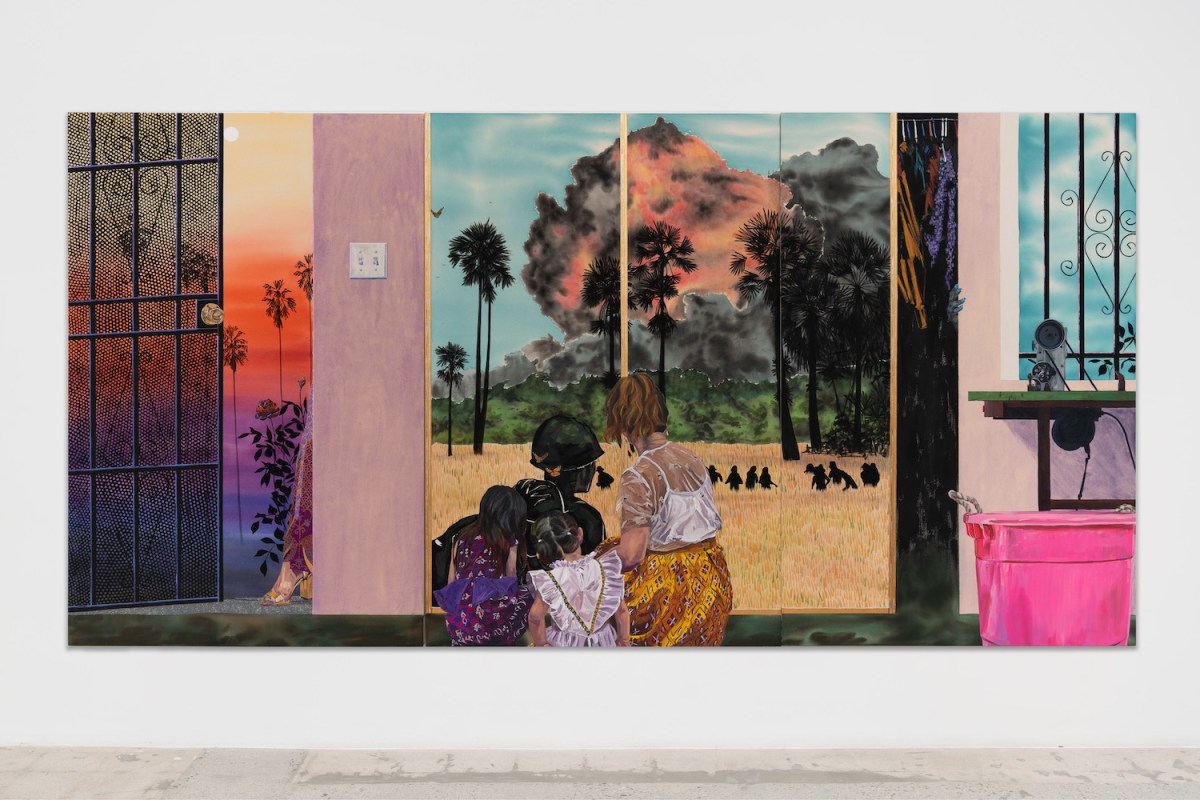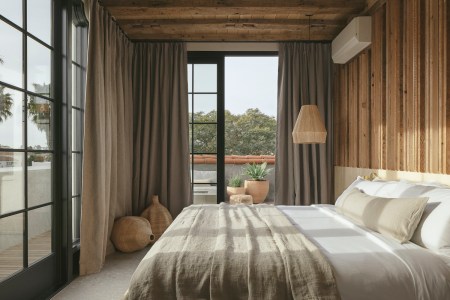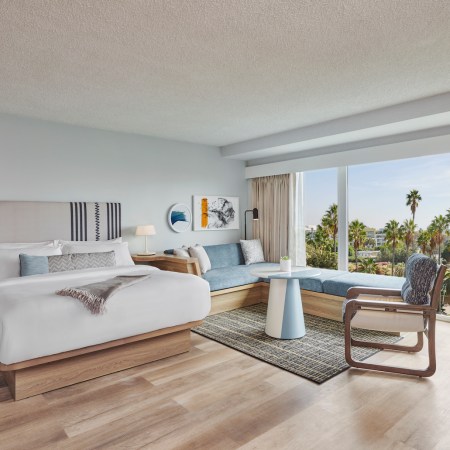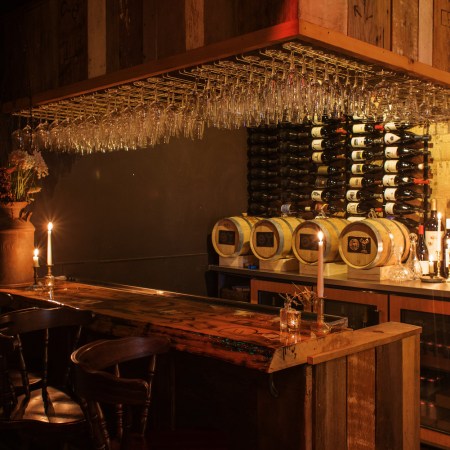For those who believe that Los Angeles is the most important art-making city in the United States, this weekend’s debut of “Made in L.A. 2023: Acts of Living” at the Hammer Museum will bolster that claim. The sixth iteration of the times-defining biennial is powerful, cohesive and necessarily diverse, finally and fully reflective of the city’s (and state’s) wealth of myriad personal histories. Among the 39 featured artists and groups are Vincent Enrique Hernandez — who considers the Valley with the seriousness of purpose and exactitude of a surveyor on the moon — painter-of-nightmares Tidawhitney Lek and Chicago-born sculptor Chiffon Thomas, whose assemblage works include architectural detritus and cast body parts. (Thomas and fellow assemblage artists Sula Bermúdez-Silverman and Maria Maea will discuss the medium at a highly recommended panel talk next Thursday, October 12.)
It’s a big and important show, one worthy of a detour — and also notable for how it wraps up a huge year for the Hammer, which was founded in 1990 by industrialist Armand Hammer (yes, that one) to house his collection of Old Masters. It quickly became a leading exhibition space for young artists and talked-about place for contemporary shows, but its office building on Wilshire lacked a sense of presence. Accomplished in phases, and impressively without fully closing to the public, a discreet, two-decades-long transformation of the Hammer by LA-based architect Michael Maltzan was finally completed earlier this year. Connie Butler, chief curator at the Hammer, tells InsideHook that the process was a challenge at times but an interesting one. “While our main galleries were under renovation, we had to be nimble with programming and reinvented ourselves doing performances in the courtyard for a period,” she says. “Architectural changes made over time were sometimes subtle but always important, although the crowning one is undoubtedly our new entrance and lobby on Wiltshire, which has transformed the Hammer and will make us much more present in the city. It finally feels like a proper museum entrance.”
Drift Santa Barbara Is a Solo Traveler’s Dream Beach Town Hotel
Those rooms are small — but a perfect location and superlative coffee bar make up for a lot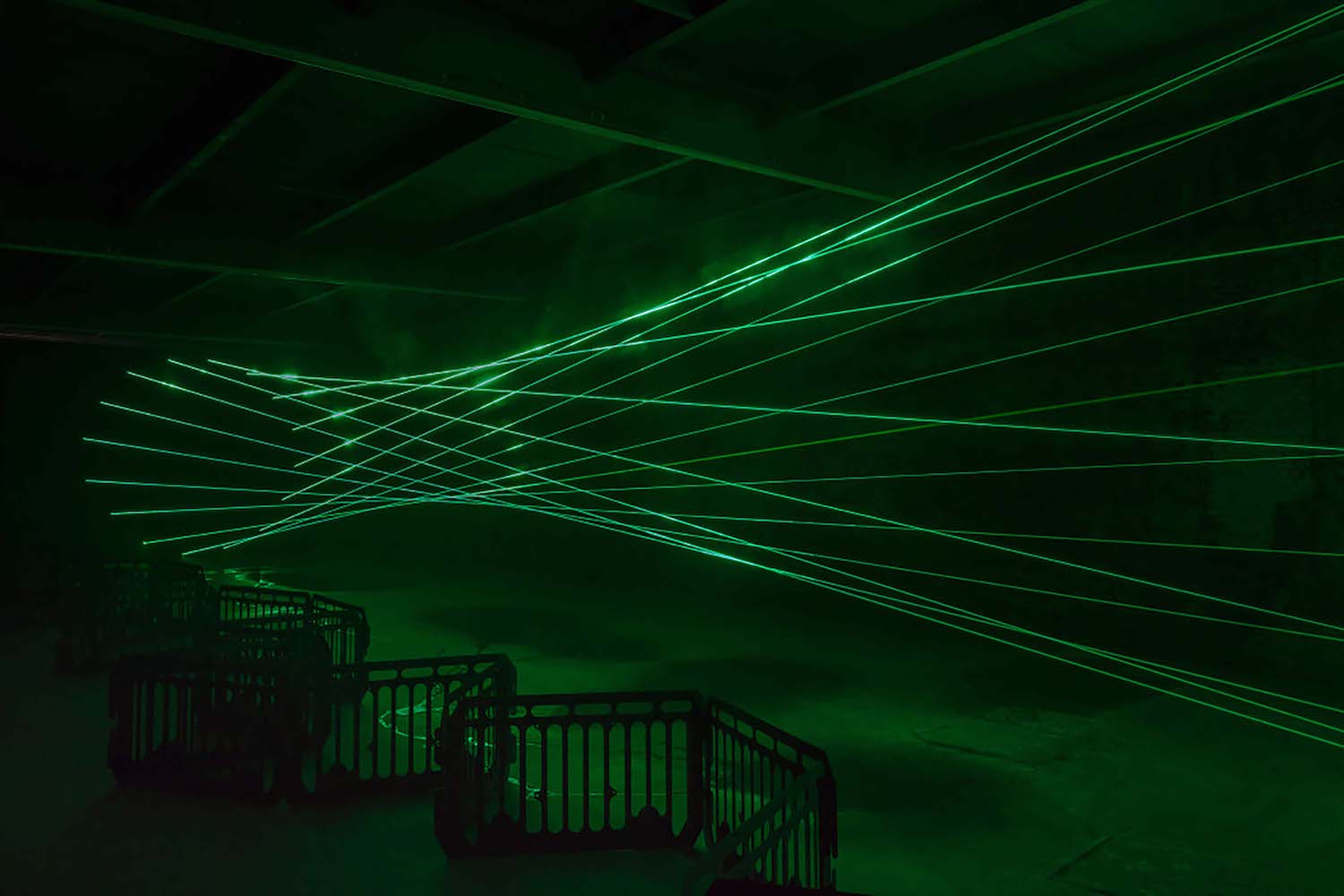
A Radical Renovation and Growing Contemporary Collection
If you haven’t been to the Hammer in a while, you might be surprised at what you find. Prominently located at the corner of Wilshire and Westwood boulevards, the new street-level entrance into the Lynda and Stewart Resnick Cultural Center (named in recognition of the $30 million gift made by their foundation back in 2018) now stretches the length of the entire block. It’s a striking place to begin the all-new Hammer experience or pop into the revamped and expanded Hammer Store. The makeover added 40,000 square feet of space, including a new ground-level gallery formerly occupied by City National Bank, which artist Rita McBride has taken over with “Particulates,” her ephemeral, high-intensity laser beam installation inspired by time travel and quantum physics. That work will stay up through March 2024, as will Sanford Biggers’s 25-foot bronze “Oracle,” displayed in the sculpture terrace at the corner of Wilshire and Glendon.
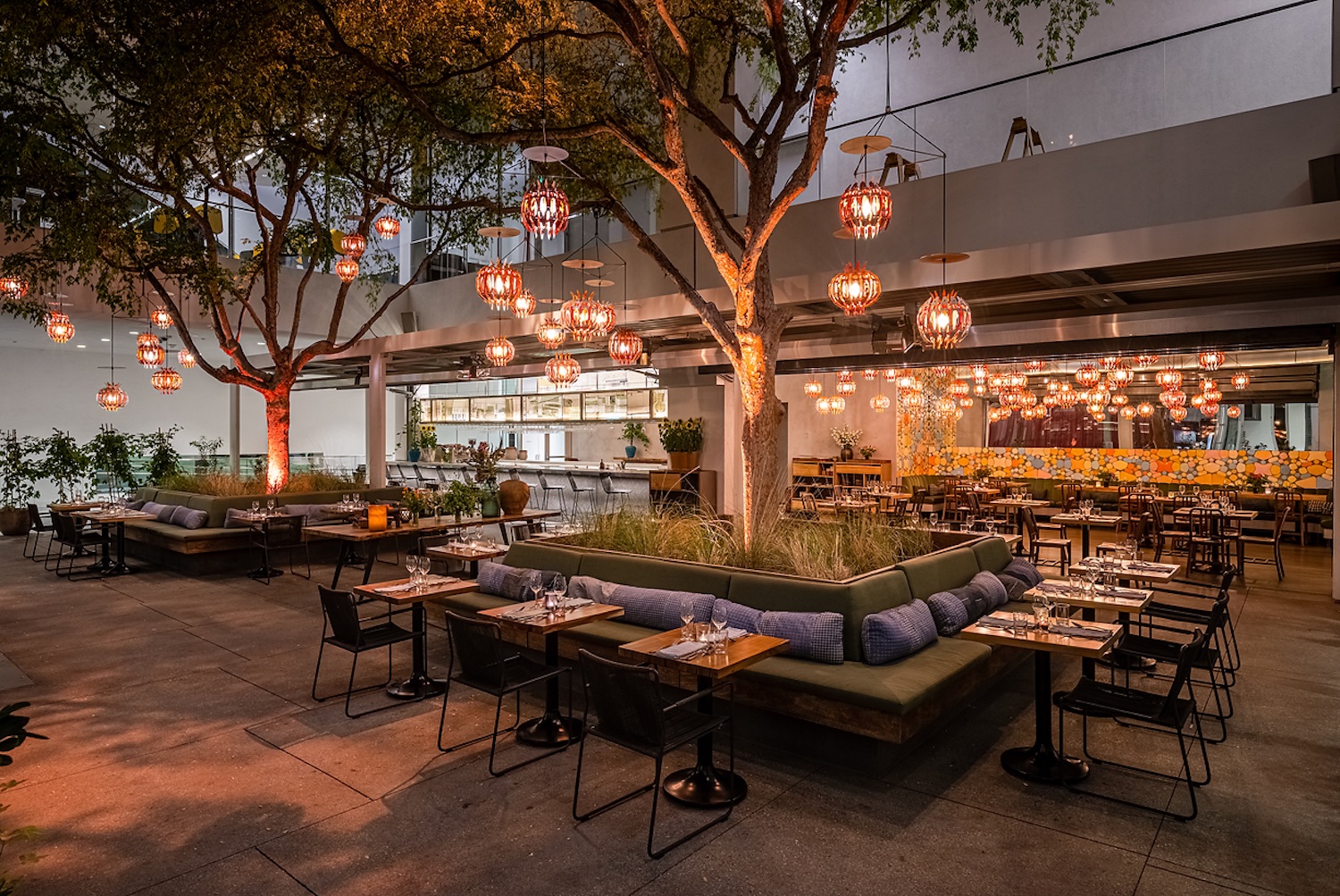
Public Programs and a Destination Restaurant
Butler, who has been with the museum for a decade, says the transformation process began with the arrival of director Ann Philbin in 1999, whose mission was not just to change the architecture but the visitor experience while increasing the museum’s visibility. As space and funding allowed, notable additions were made including the Billy Wilder Theater in 2006, which regularly hosts screenings and is home to Hammer and UCLA Film & Television Archives’ public programs. Fine-dining establishment Lulu, a collaboration between farm-to-table pioneer Alice Waters and chef and cookbook author David Tanis, came in November 2021. The restaurant and bar is a standalone destination, but its open-air courtyard, punctuated by two Chinese elm trees, is a pleasant place to grab a bite to eat and catch up with friends after seeing the art.
Another signature of the Hammer is its public programs, which cover a range of topics not limited to its current exhibitions, though those are nonetheless well represented. In addition to the assemblage-specific talk on October 12, look for regular tours of the biennial, including one this Saturday. You’ll also find musical performances, meditation sessions, readings, art labs and high-profile guests, like those debating and celebrating “50 Years of Ms. Magazine” on Thursday. More than 200 are coordinated annually, and regular highlights include the educator-led Art in Conversation and weekly drop-in Mindful Awareness Meditation session.
The museum has one more evolutionary leap to make, at least from a practical perspective. Butler believes that when the Purple Line Extension stop across the avenue from the museum is fully functional (sometime in 2028), the Hammer will become an even bigger attraction for visitors and Angelenos — much less “hidden gem” and more on-the-map destination art museum.
“Made in L.A. 2023: Acts of Living” is up through the end of 2023. Open from 11 a.m. except for Mondays, admission to all exhibitions and public programs at the Hammer Museum is free. 10899 Wilshire Blvd, Los Angeles.
This article was featured in the InsideHook LA newsletter. Sign up now for more from the Southland.
